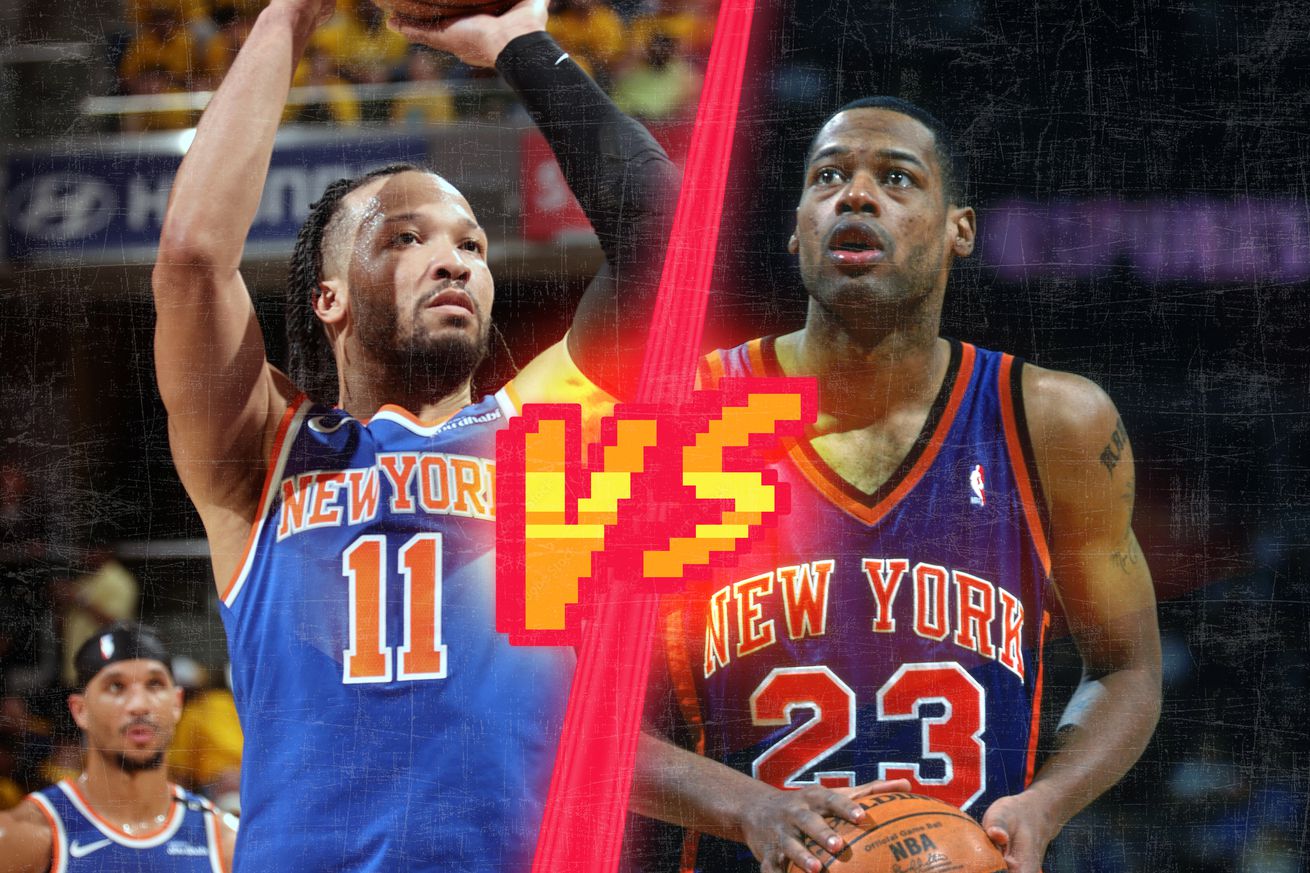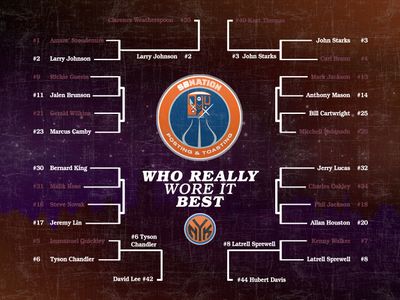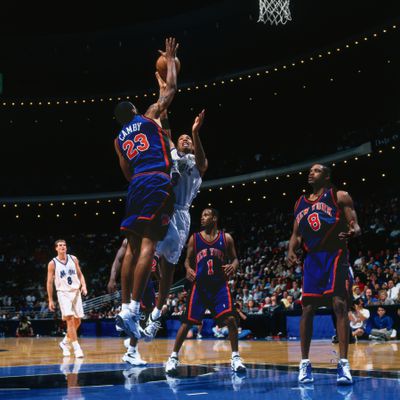
Captain Clutch vs. The Camby Man
We couldn’t have wrapped up Round 1 in more dramatic fashion. Jerry Lucas narrowly edged out Charles Oakley in the most-voted-on matchup of the first round. The final margin? Just three votes in favor of Lucas.
To keep things moving, we’re handing out a few default wins where it makes sense. If anyone wants to argue that Clarence Weatherspoon wore a Knicks jersey better than Larry Johnson, I’m all ears, but let’s be honest, we can save the digital ink and give that one to LJ. Same goes for John Starks vs. Kurt Thomas. Respect to Kurt, but c’mon, he’s not taking down Starks.

To kick round two off, we couldn’t have two more polar opposites. I have a feeling which way this one is going to go, but I’ll keep my fingertips closed not to sway any votes.
Let Round 2 commence. Please remember the rules. The debate isn’t about who had the better overall career or who was a better player. The debate is who wore the Knicks blue and orange better during their time with the team only.

Photo by Al Bello/Getty Images
#11 Jalen Brunson — In Round 1, Brunson was pitted against #9 Richie Guerin. The segment ran in March, and it was a pretty easy victory for the current Knicks captain. Since then, Brunson has only further solidified his legacy as one of the greatest Knicks in team history. “Captain Clutch” led New York to a Game 7 appearance in this year’s Eastern Conference Finals and continues to shine as the team’s cornerstone. Over his first three seasons with the Knicks, Brunson has averaged 26.4 points and 6.7 assists per game while shooting just under 40% from beyond the arc. His performance has earned him two All-Star selections, two All-NBA Second Team honors, and two top-10 finishes in MVP voting. His celebrity has grown so big that he has even made the crossover into the WWE universe by becoming a playable character in this year’s WWE 2k25.
#23 Marcus Camby — In 1998, the Knicks shook things up on draft day, shipping fan-favorite enforcer Charles Oakley and the draft rights to Sean Marks to the Raptors in exchange for Marcus Camby. It was a clear signal: the Knicks were ready to get younger and faster, moving on from muscle to mobility. Enter Camby, 6’11”, built like a gazelle, and ready to run. He brought a totally different vibe from Oakley’s bruising, no-nonsense presence. Camby knew the stakes and didn’t try to pretend he was a direct replacement: “No one can replace Oak. He was the heart, soul, and team leader. I play different positions. I bring versatility. We’ll take it one day at a time and focus on winning, that’s what I’m about.” Respectful, sure, but confident. And he backed it up.

Photo by Fernando Medina/NBAE via Getty Images
During the first two years of his initial run with the Knicks, Marcus Camby mostly played in the shadow of franchise legend Patrick Ewing. But when Ewing went down with a season-ending Achilles injury during the 1999 playoffs, Camby didn’t blink. He stepped up big time. Teaming with Allan Houston and Latrell Sprewell, the trio lit a spark under the roster and redefined the team’s identity on the fly. Their grit, speed, and swagger carried the Knicks on a Cinderella run for the ages, making history as the first No. 8 seed to ever crash the NBA Finals.
